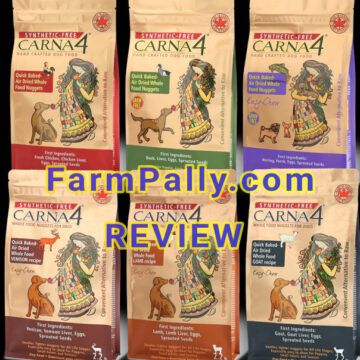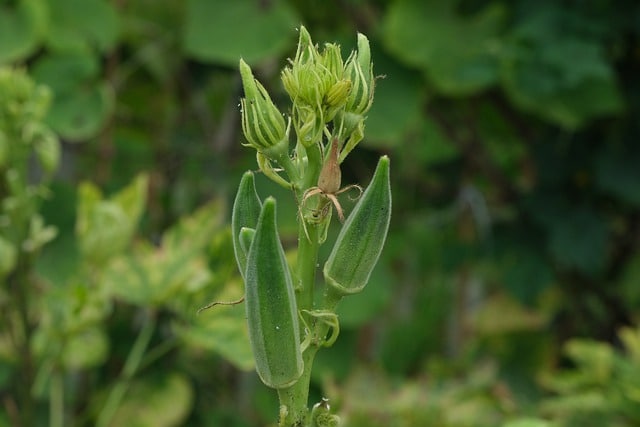Okra is a common vegetable crop grown in many part of the tropics for its mucilaginous fruits.
It is a dicotyledonous annual herbaceous plant that’s widely grown in all ecological zones of Nigeria but is not of much economic importance compared with tomatoes.
Origin
The okra plant originated in central Africa but is now cultivated widely in the tropics and sub tropics.
Ecology
The drop requires a long warm growing season. It is quite susceptible to frost and will not thrive when there is a continued cold spell.
It grows in all type of soils, thriving best in a moist, friable, well drained manured soil with a pH between 6.0 and 6.8. It tolerates temperature of 25-35°C.
Botany
It is a tall erect annual plant, reaching a height of 1.8m.
However, in recent years, dwarf and high yielding varieties have been developed.
The plants have a tap root system with many laterals but they are generally not too deep rooted.
The stems are slightly hairy with large alternate cordage leaves.
The leaves are carried on long petioles and are divided into three or five pointed lobes with notched or toothed margins.
The upper leaves tend to be more deeply divided than the lower ones, and the petioles are often red in color.
The bright yellow flowers are carried singly in the leaf axils. The mucilaginous fruits contain numerous seeds varying in color from dark green to brown.
The variety commonly grown in the northern parts of Nigeria is ‘White velvet’ and in the southern parts, ‘Lady’s fingers’.
Dwarf early maturing and high yielding varieties are being developed by the National Institute for Horticulture Research (NIHORT), Ibadan.
Cultural practices
In places where the rainy season is long enough for only one crop, okra can be sown anytime between April and July.
Because of pest problem early in the rains, farmers invariably sow late.
In the Southern States, two crops are possible; the first(early crop) is sown in March-April at the start of the rains and the second (late crop) in August.
Tall varieties are planted at 75x30cm while the dwarf ones are planted closer at 60x30cm.
Planting of some cultivars at even higher plant densities (e.g 40x30cm) result in considerable yield increases. Seeds germinate in 3-5 days of planting.
Like most vegetables, okra benefits from the application of organic manures.
Wherever possible, apply farmyard manure at the rate of 25 tons/ha worked into the soil at land preparation.
Compound fertilizer NPK 15.15.15 can be applied at 200kg/ha.
Weed control can be done manually at 3 and 7 weeks after planting. Herbicides can also be used, e.g. prometryne at 2kg a.I/ha applied pre-emergence.
Harvesting
Harvesting can commence at 2-3 months after planting and continue for a period of 1-2 months as the plants are indeterminate.
The pods are picked while the tips are still tender and break with a snap. Early planted okra yields higher than the late-planted crop.
Yields
Under local conditions, yields generally vary between 6-12t/ha of fresh pods. Yields of up to 22 t/ha can be obtained under experimental conditions using improved varieties, fertilizers and high level of crop husbandry.
Storage
The water content of okra is high (over 80%) and so if not properly preserved, deteriorates rapidly.
For preservation, the green fruits can be sliced and dried. They can be stored in the dry form for a long period.
On a short-term basis, fruits can be cold stored at 10-15°C either whole or chopped up and tied up in polyethylene bags.
Chemical composition
The edible portion of the fruit contains approximately:
86.1% moisture,
9.7% carbohydrates,
2.2% protein,
1.0 fibres,
0.2% fats and
0.9% ash.
Okra is a good source of vitamin C and minerals, especially iodine.
Uses
1. The fresh green tender fruits are used as a vegetable. They are often sliced and dehydrated to conserve them for later use.
2. A large proportion of the crop is processed by canning, freezing or preserving in brine.
3 As the young tender fruits are mucilaginous, they are often used in tropical cookery to thicken soups, sources and stems.
4 The ripe seeds contain approximately 20% edible oil.
5. The stem and mature pods produce a fibre, which is used in paper making and for textiles in some countries.
Diseases
Many leaf diseases which are not of economic importance. However,mosaic is a serious virus disease which causes wrinkling of leaves and stunting of plants.
Root knot nematodes can also result in dwarfing of plants. Control is by crop rotation.










